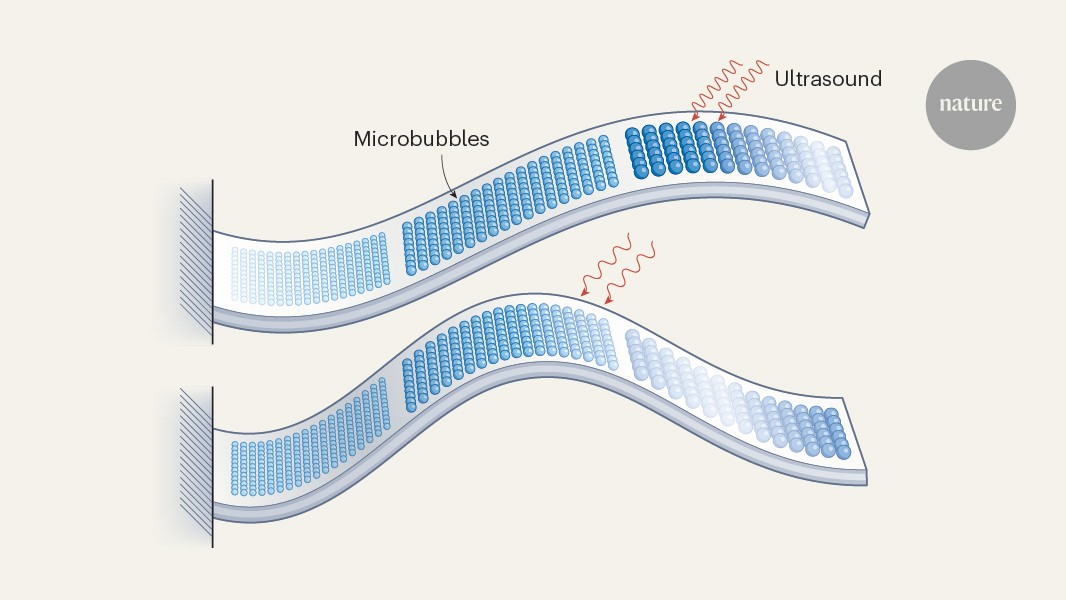Modern robots have extraordinary capabilities, yet they still cannot replicate the soft, graded subtlety of human touch. This limitation has helped to define the emerging field of soft robotics, which aims to replace the rigid materials and bulky actuators — the drive units that turn energy into motion — of conventional robots with compliant materials and soft actuators that move fluidly and adaptively, much like biological muscles. Such systems could transform prosthetics, enable minimally invasive, surgical robots to operate in the body and power haptic wearable devices that convey information through touch (for example, by vibrating or applying pressure). Writing in Nature, Shi et al.1 report a considerable advance towards this goal: soft, ultrasound-powered robots that can be wirelessly activated to undergo coordinated shape changes (deformations). In doing so, the authors have created an artificial muscle, translating key design principles from biology to a soft-robotics platform.


